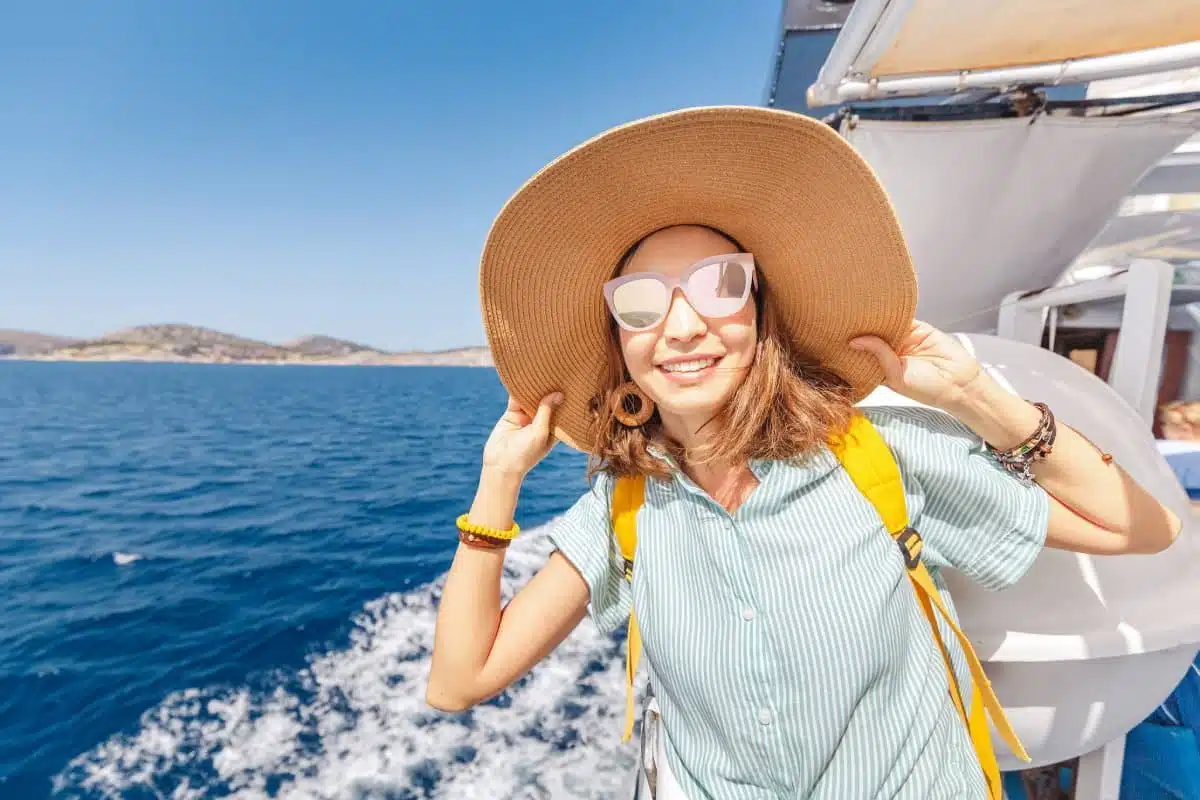As the pace of life seems perpetually fast, slow travel emerges as a compelling antidote, inviting travelers to immerse themselves deeply in the cultures, landscapes, and rhythms of their destinations. This approach to travel emphasizes connections—both to local communities and the environment—encouraging a more sustainable and meaningful exploration of the world. By prioritizing quality over quantity, slow travelers forge authentic experiences, often finding that the journey itself is as enriching as the destination. This guide explores the essence of slow travel through a selection of activities and destinations that exemplify its principles, offering insights into how travelers can embrace a slower pace to discover the world in profound and sustainable ways.
1. Train Journeys Across Europe

Image Credit: Shutterstock / AaronChenPS2
Europe’s extensive rail network offers an exemplary canvas for slow travel, weaving through diverse landscapes, from Tuscany’s rolling hills to Norway’s rugged coasts. Train travel in Europe is not merely a means to an end but a journey that invites travelers to savor the shifting scenery, engage with fellow passengers, and embrace the leisurely pace of movement. The continent’s trains range from high-speed connections between major cities to scenic routes that meander through remote areas, offering glimpses into the heart of European life that road or air travel cannot match. This mode of travel supports a sustainable tourism ethos, as trains are one of the most eco-friendly ways to explore vast distances.
Insider’s Tip
For an unparalleled experience, consider purchasing a rail pass, allowing flexible travel across multiple countries. This option offers economic benefits and encourages spontaneous detours to lesser-known destinations, enriching your journey.
When to Travel
Spring (April to June) and autumn (September to November) are ideal for train travel in Europe, offering mild weather and fewer crowds, enhancing the slow travel experience with more personal space and time to engage with locals.
How to Get There
Major airports across Europe serve as convenient entry points for international travelers. Access to the train network is often direct from these hubs, with comprehensive services designed to facilitate smooth transitions from air to rail.
2. Canal Boating in the English Countryside
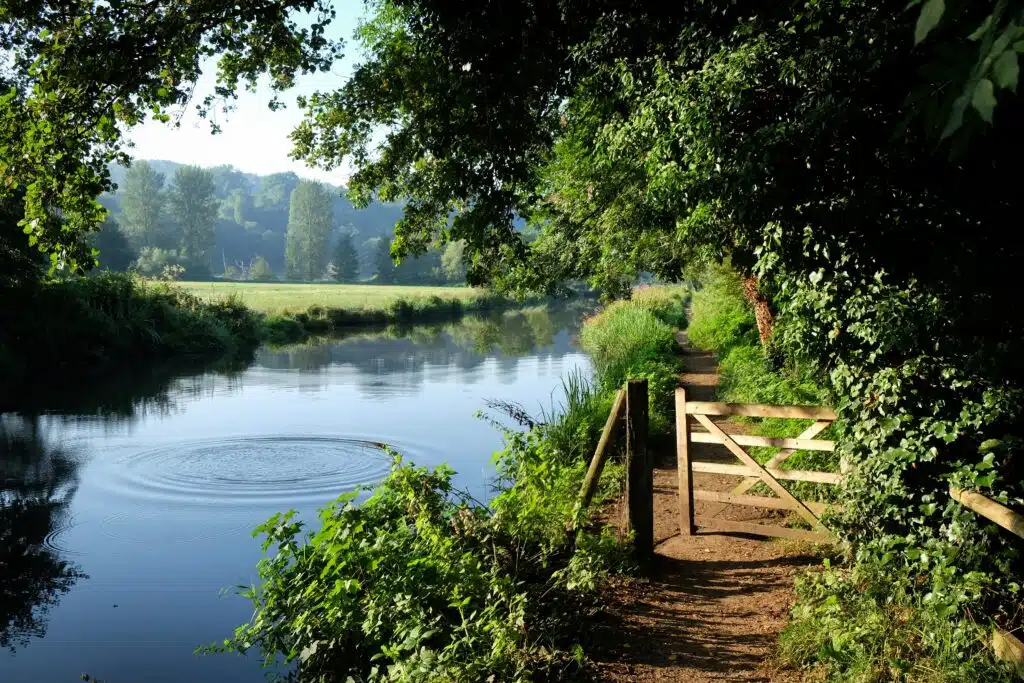
Image credit: Shutterstock / Alex Manders
The tranquil waterways of the English countryside offer a unique perspective on slow travel, inviting adventurers to captain their own canal boats through historic routes. This leisurely pace allows for an intimate exploration of England’s rural beauty, punctuated by stops at quaint villages, ancient pubs, and serene landscapes. Life on the canals is dictated by the natural flow of the water and the necessity of navigating locks, ensuring that travelers are fully engaged with their surroundings. This form of travel minimizes environmental impact and supports local economies, as travelers frequent small businesses along their route.
Insider’s Tip
Opt for a canal boat equipped with a kitchen, allowing you to sample and prepare local produce purchased from farmers’ markets and local suppliers, further enriching your connection to the destination.
When to Travel
The best time for canal boating in England is late spring through early autumn (May to September), when the weather is conducive to outdoor activities and the countryside is in full bloom.
How to Get There
Fly into major UK airports such as London Heathrow or Manchester. From there, regional trains and buses connect to canal boat hire companies, typically located near major waterways.
3. Walking Pilgrimages in Japan
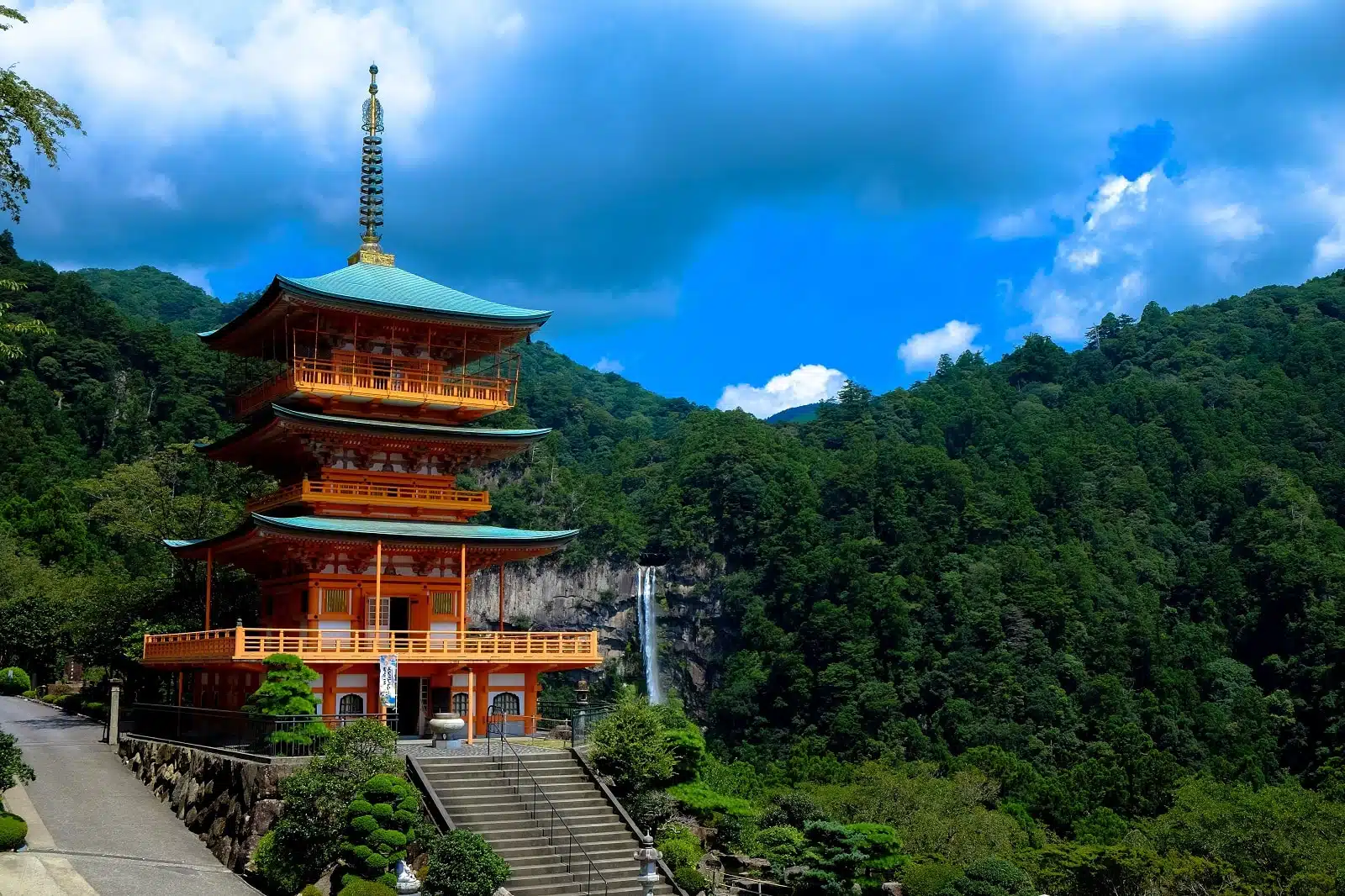
Image Credit: Pexels / Francesco Ungaro
Japan’s ancient walking routes, such as the Kumano Kodo pilgrimage, offer travelers a unique blend of spiritual journeying, cultural immersion, and natural beauty. These paths wind through mountains, forests, and villages, connecting sacred sites and offering serene landscapes that have been traveled for centuries. Walking these routes is a physical challenge and a profound personal and cultural experience. Pilgrims are invited to slow down, reflect, and connect with the spiritual heritage of Japan, all while embracing the principles of sustainability and minimal-impact travel. The journey is enriched by stays in traditional ryokans, participation in local customs, and the opportunity to savor regional cuisine, making it a holistic exploration of Japanese culture and landscapes.
Insider’s Tip
Engage with the tradition of ‘osettai,’ where locals offer gifts or assistance to pilgrims. This practice enriches the pilgrimage with unexpected moments of connection and insight into the generosity of the Japanese spirit.
When to Travel
The best times for walking pilgrimages in Japan are during the spring (March to May) and autumn (September to November) months, when the weather is mild. The landscapes are particularly striking, either with the blossoming of cherry trees or the vibrant autumn colors.
How to Get There
International travelers can fly into major airports such as Tokyo Narita or Osaka Kansai. From there, domestic travel options like trains and buses can take you closer to the starting points of these pilgrimage routes, often located in more rural areas.
4. Slow Food Tours in Italy

Image Credit: Shutterstock / Vera Prokhorova
Italy’s slow food movement, originating in the Piedmont region but now celebrated nationwide, offers a delicious lens through which to explore the country’s rich culinary traditions and commitment to biodiversity and sustainable agriculture. Participating in a slow food tour allows travelers to explore the local food culture, visit organic farms, learn traditional cooking techniques, and dine at establishments prioritizing locally sourced ingredients. This approach supports local economies and sustainable practices and offers an authentic taste of Italy’s diverse regional cuisines. From truffle hunting in Tuscany to cheese making in Puglia, slow food tours provide a hands-on, immersive experience that celebrates the connection between land, food, and community.
Insider’s Tip
Seek out experiences that offer a visit to local markets and a cooking class. This combination provides insight into selecting the best local ingredients and the opportunity to learn directly from passionate local chefs.
When to Travel
Late spring (May to June) and early autumn (September to October) are ideal for slow food tours in Italy, avoiding the peak tourist season while enjoying the bounty of seasonal produce available during these months.
How to Get There
Major international gateways into Italy include Rome’s Fiumicino and Milan’s Malpensa airports. Regional trains and buses from these cities can transport you to the heart of Italy’s diverse food regions, often with direct routes to smaller towns and rural areas.
5. Eco-conscious Safari in Kenya
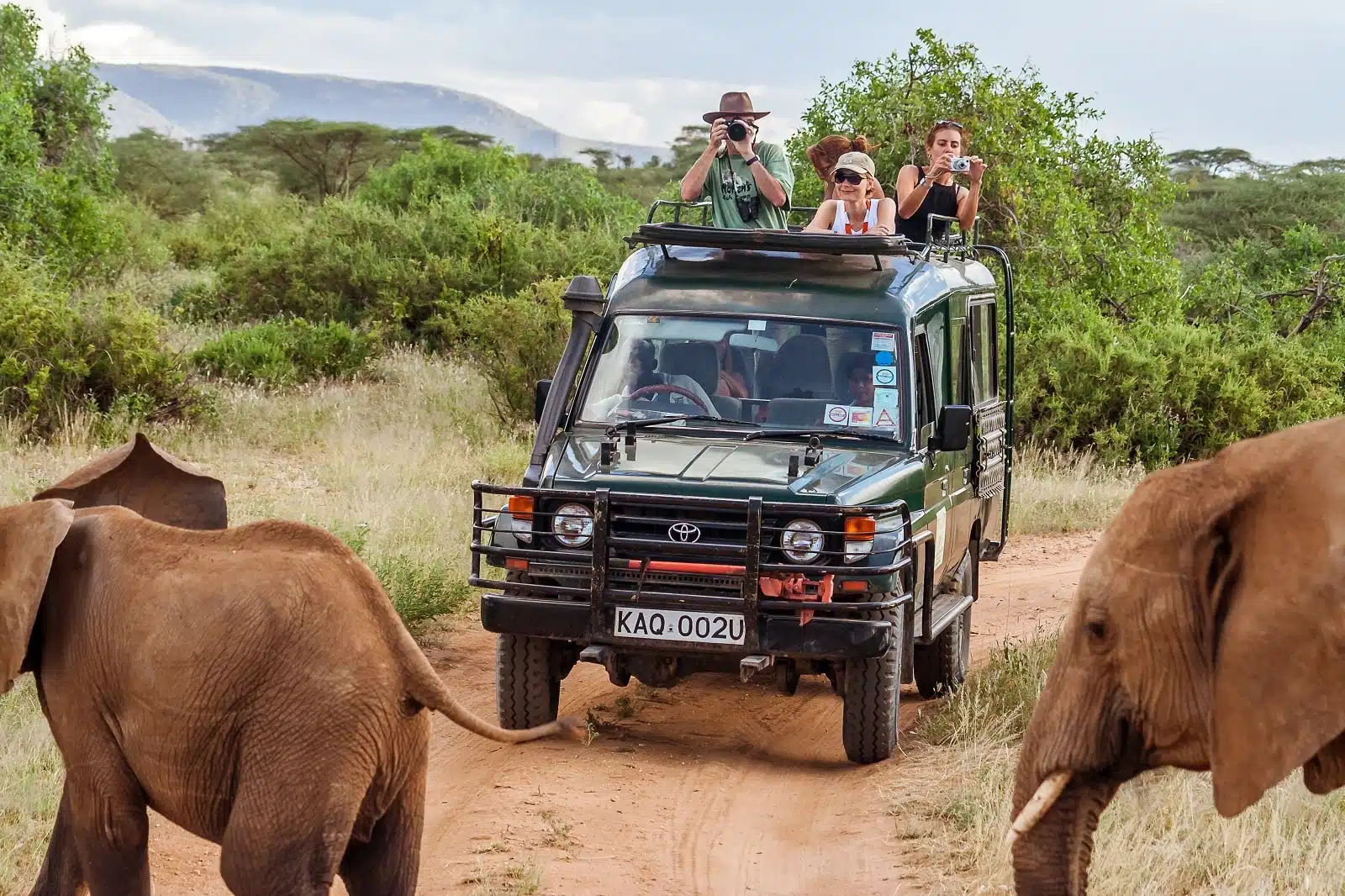
Image Credit: Shutterstock / Pierre-Yves Babelon
Kenya offers a unique opportunity for travelers to engage with wildlife and nature in a manner that supports conservation and community development. An eco-conscious safari in Kenya is about witnessing the majestic beauty of African wildlife and understanding the intricate balance between humans and nature. These safaris are designed to minimize environmental impact and support local conservation efforts, including wildlife protection initiatives and community projects. Travelers can stay in eco-lodges or camps that use renewable energy, water-saving systems, and sustainable waste management practices. The experience is enriched by knowledgeable guides who provide insights into the local ecosystems, conservation challenges, and the cultural heritage of the communities living alongside the wildlife.
Insider’s Tip
Choose a safari operator actively involved in conservation efforts and community projects. Some of these operators offer visits to conservation projects, allowing travelers to see firsthand the positive impact of their travel.
When to Travel
The best times to go on a safari in Kenya are during the dry seasons, from late June to October and from December to March. These periods offer the best wildlife viewing opportunities as animals congregate around water sources.
How to Get There
International travelers can fly into Nairobi’s Jomo Kenyatta International Airport or Mombasa’s Moi International Airport. From there, safari operators often arrange transport to the wildlife reserves by road or domestic flights to smaller airstrips closer to the safari locations.
6. Volunteering in South American Communities

Image Credit: Shutterstock / Dmytro Flisak
Volunteering in South American communities offers a profound way to engage with slow travel, allowing travelers to contribute their time and skills to meaningful projects. Whether assisting in educational programs, participating in environmental conservation, or helping build sustainable infrastructure, volunteering provides a deep connection to the local communities and landscapes. This form of travel fosters a mutual exchange of cultures, ideas, and friendships, offering insights into the challenges and beauties of life in South American countries. It’s a journey that impacts the communities visited and transforms the traveler, fostering a greater understanding of global interconnectedness and the importance of sustainable living practices.
Insider’s Tip
Select a volunteering program that aligns with your skills and interests and closely partners with local communities to ensure that your contribution is both meaningful and sustainable.
When to Travel
The best time to volunteer in South America varies greatly depending on the country and the type of project. However, many programs operate year-round, with specific projects timed to coincide with local needs and climate conditions.
How to Get There
Major international airports in South America include São Paulo-Guarulhos (Brazil), Bogotá’s El Dorado (Colombia), and Buenos Aires’ Ezeiza (Argentina). From these entry points, domestic travel arrangements can be made to reach more remote volunteering locations, often facilitated by the organizing NGO or community project.
7. Bicycle Tours in Vietnam
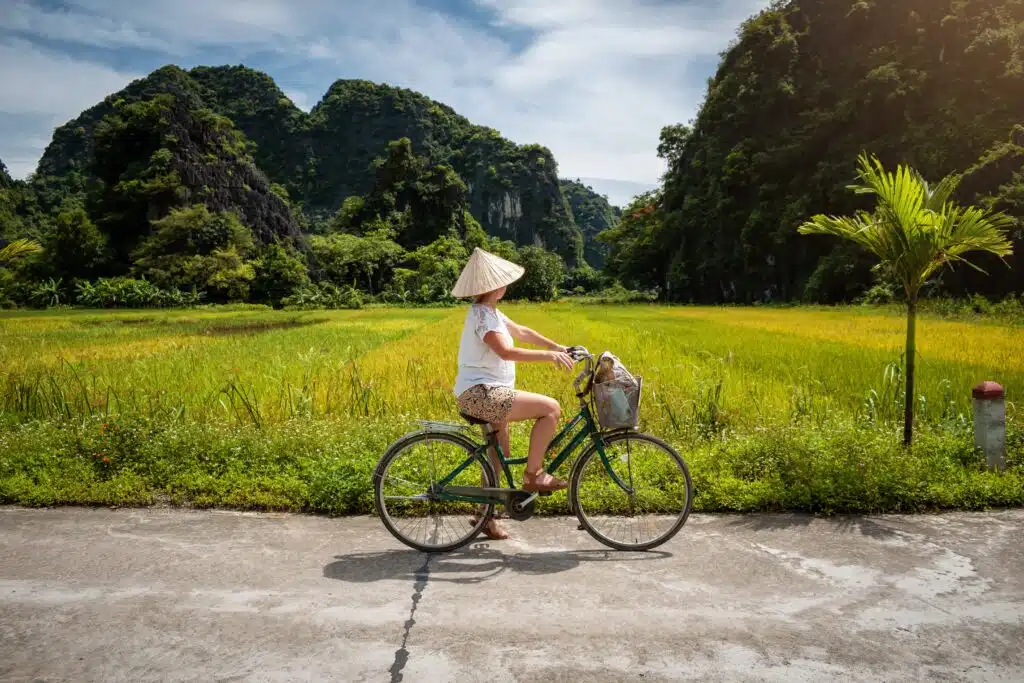
Image credit: Shutterstock / Javier Dall
Exploring Vietnam by bicycle is an extraordinary way to experience the country’s stunning landscapes, vibrant culture, and welcoming communities at a pace that allows for genuine immersion. Cycling routes in Vietnam can take travelers through bustling cities, alongside lush rice paddies, into the heart of dense jungles, and up challenging mountain passes, offering diverse experiences. This mode of travel promotes physical health and minimizes environmental impact, aligning with the principles of slow travel. Accommodations along the way range from family-run guesthouses to eco-lodges, where travelers can enjoy local hospitality and cuisine, further enriching their journey.
Insider’s Tip
Consider packing light and renting a high-quality bicycle locally to support local businesses and ensure you have a bike suited to the terrain of Vietnam.
When to Travel
The best time for a bicycle tour in Vietnam varies by region due to the country’s diverse climate. Generally, the cooler, dry season from November to April is most comfortable for cycling.
How to Get There
International travelers typically arrive via Hanoi’s Noi Bai International Airport in the north or Ho Chi Minh City’s Tan Son Nhat International Airport in the south. Bicycles can be rented from these cities, and various tour operators offer guided cycling tours across the country.
8. Island Hopping in the Philippines
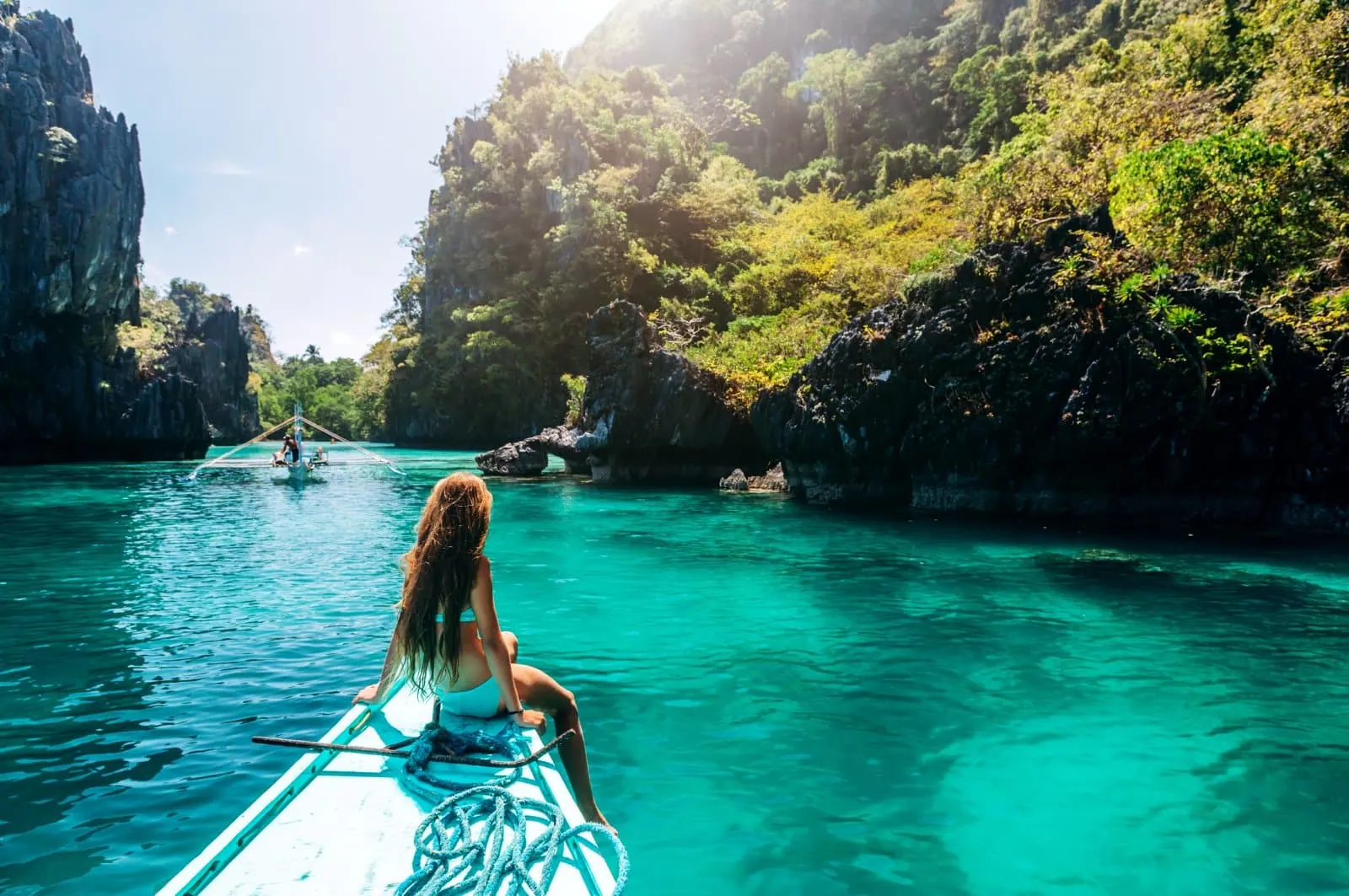
Image Credit: Shutterstock / Alena Ozerova
With its thousands of islands, the Philippines presents an idyllic setting for slow travel through island hopping. This approach allows travelers to experience the archipelago’s diverse ecosystems, cultures, and landscapes. From the crystal-clear waters of Palawan to the ancient rice terraces of Luzon, each destination offers a unique glimpse into the Philippines’ natural beauty and cultural heritage. Traveling by local ferries and staying in community-run accommodations supports local economies and promotes sustainable tourism practices.
Insider’s Tip
Learn a few basic phrases in Filipino or the local dialects to enrich interactions with local communities and show respect for their culture.
When to Travel
The dry season from December to May is the best time for island hopping in the Philippines, offering sunny days and minimal rainfall.
How to Get There
To start your journey, fly into Manila’s Ninoy Aquino International Airport or Cebu’s Mactan-Cebu International Airport. From there, local airlines, ferries, and boats provide access to the various islands.
9. Heritage Trails in India
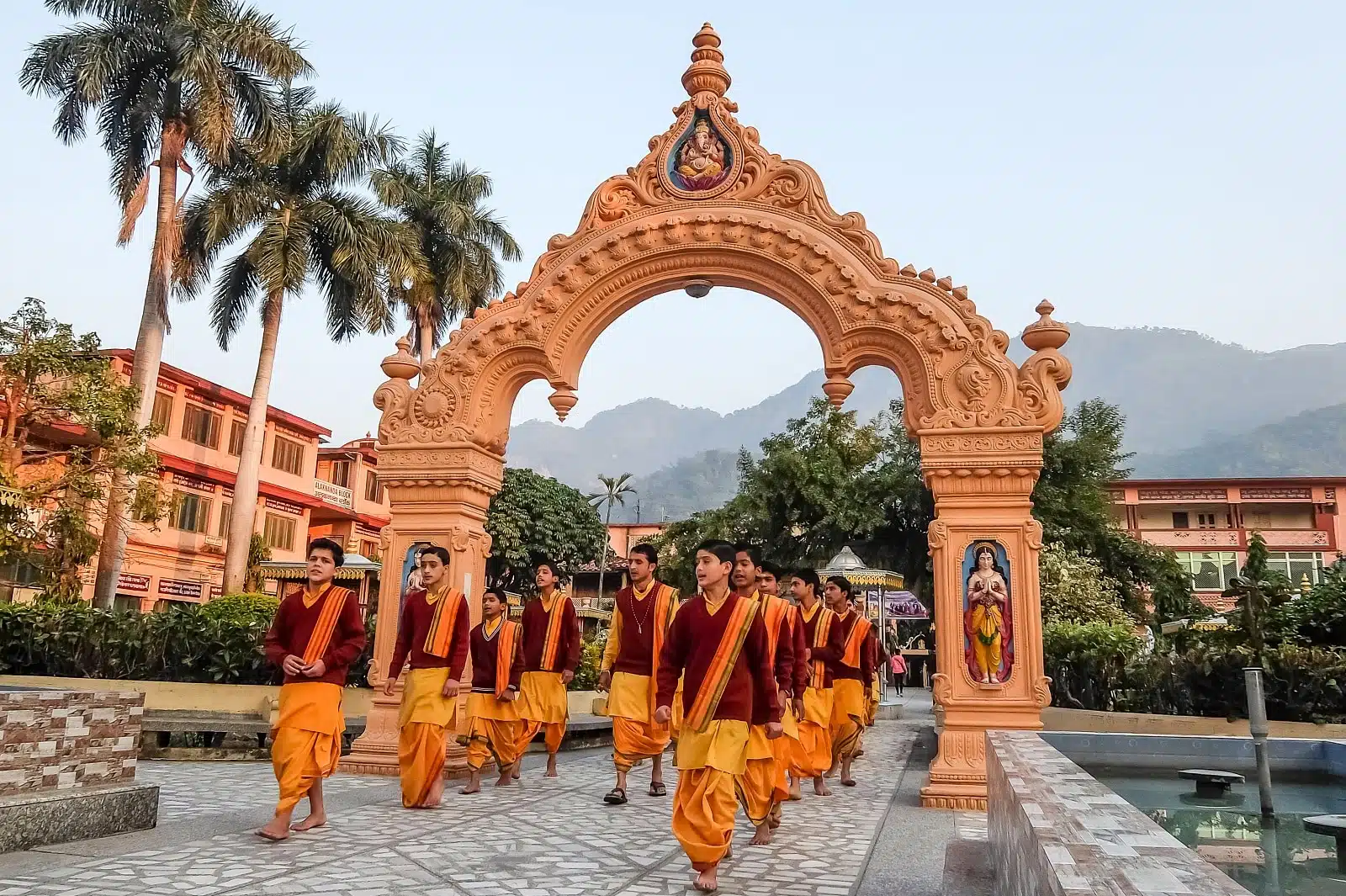
Image Credit: Shutterstock / Denis.Vostrikov
India’s rich history and culture can be best appreciated through its heritage trails, which take travelers through ancient forts, palaces, sacred sites, and vibrant markets. Walking or cycling these trails allows for a slow and engaging exploration of India’s diverse cultural landscapes, offering insights into the country’s complex history and traditions. Engaging with local guides enriches the experience, supports the local economy, and promotes cultural exchange.
Insider’s Tip
Choose a trail that includes community visits and homestays to experience the warmth of Indian hospitality and gain deeper cultural insights.
When to Travel
The cooler months from November to February are ideal for exploring India’s heritage trails, especially in the northern regions.
How to Get There
International travelers can land at Delhi’s Indira Gandhi International Airport, Mumbai’s Chhatrapati Shivaji Maharaj International Airport, or other major cities. From there, domestic travel options like trains, buses, and internal flights can connect you to the starting points of various heritage trails.
10. Conservation Volunteering in Australia
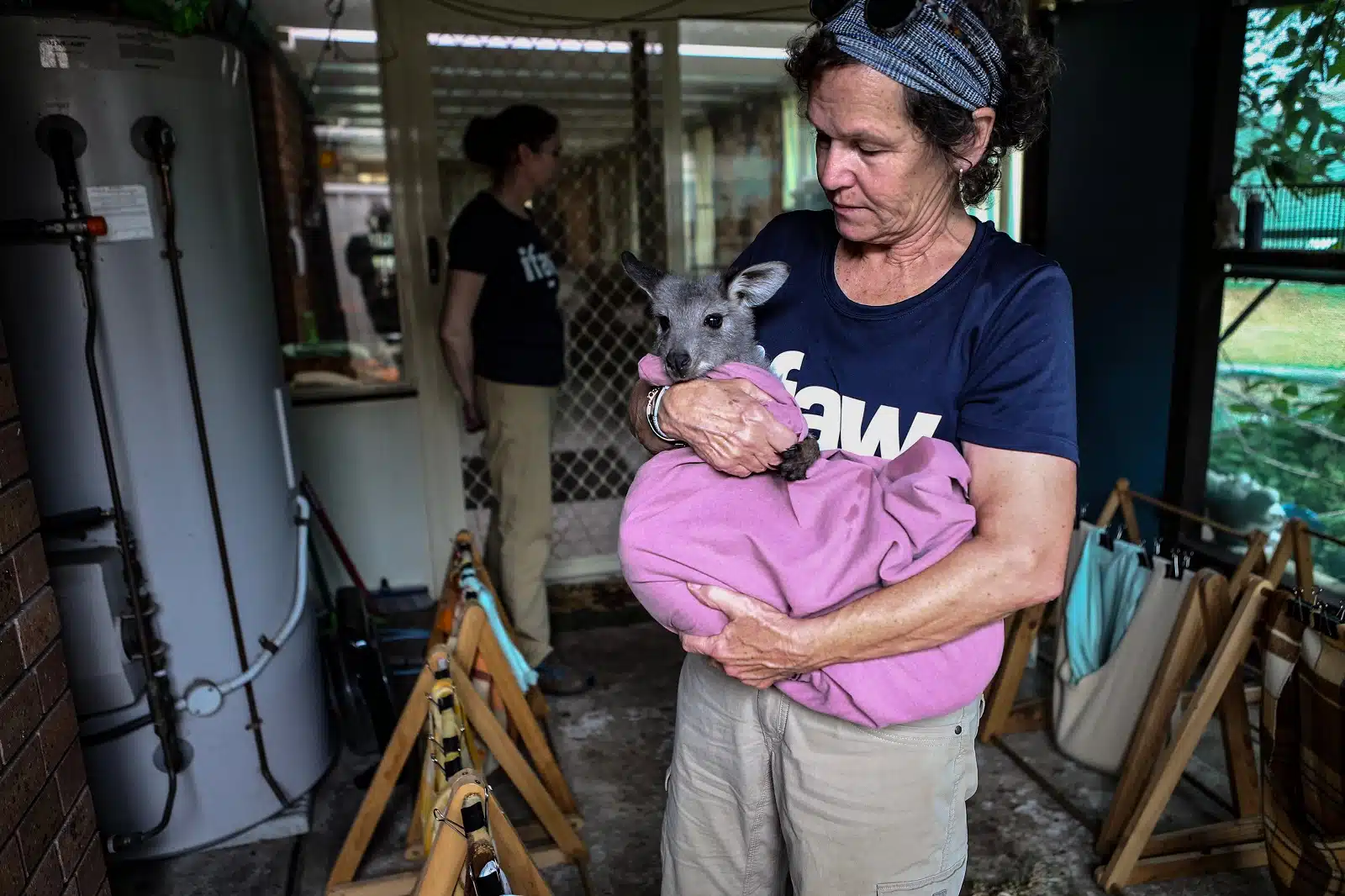
Image Credit: Pexels /International Fund for Animal Welfare
Australia offers unique opportunities for slow travelers to contribute to conservation efforts, including wildlife rehabilitation, reforestation projects, and marine conservation. These experiences allow travelers to connect with Australia’s unique ecosystems and wildlife, learn about environmental challenges, and contribute to meaningful conservation work. Staying in eco-friendly accommodations and engaging with local conservationists and scientists enhances the experience and understanding of Australia’s natural heritage.
Insider’s Tip
Select a project that offers comprehensive orientation and training to ensure your volunteering has a positive impact and that you gain valuable knowledge and skills.
When to Travel
The best time to volunteer in conservation projects in Australia varies by region and type of project. Generally, the cooler months from April to October are more comfortable for outdoor activities in most parts of the country.
How to Get There
International flights commonly arrive at Sydney’s Kingsford Smith Airport, Melbourne’s Tullamarine Airport, or Brisbane Airport. From these cities, project organizers often arrange transport to the conservation sites.
11. Cultural Immersion in Morocco
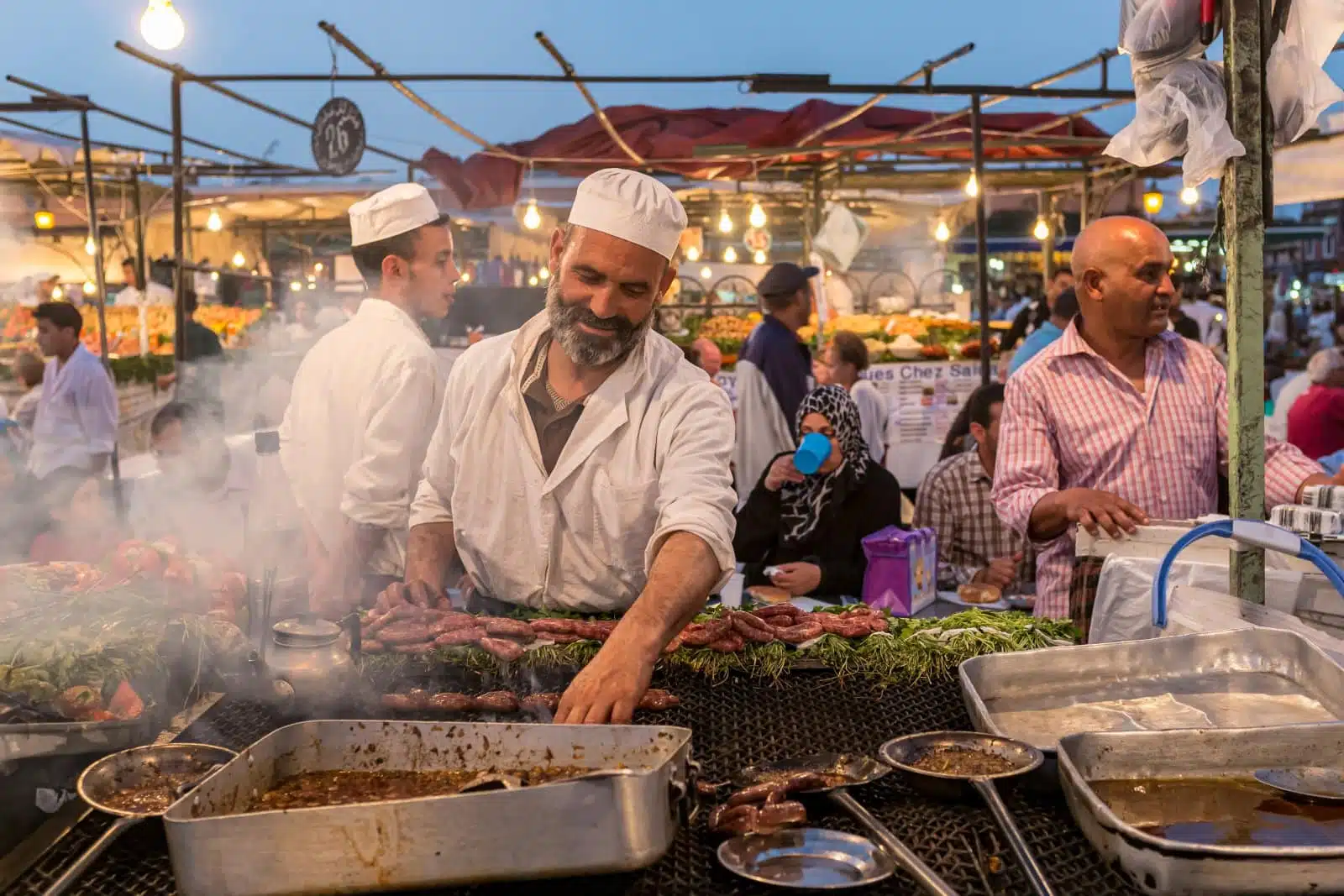
Morocco offers a rich cultural understanding for travelers seeking an immersive experience. From the bustling souks of Marrakech to the serene Atlas Mountains and the ancient medinas of Fes, travelers can explore Morocco’s diverse landscapes and cultural heritage at a leisurely pace. Engaging with local artisans, participating in traditional cooking classes, and staying in riads are just a few ways travelers can connect with Moroccan culture in a meaningful way.
Insider’s Tip
Plan your visit to coincide with a local festival or cultural event for an unforgettable experience of Morocco’s vibrant culture and traditions.
When to Travel
Spring (March to May) and autumn (September to November) offer pleasant weather for exploring Morocco’s diverse landscapes and cultural sites.
How to Get There
International travelers can fly into Casablanca’s Mohammed V International Airport or Marrakech’s Menara Airport. From there, trains, buses, and private transfers can connect you to various destinations across the country.
12. Slow River Cruises in the Mekong Delta, Vietnam
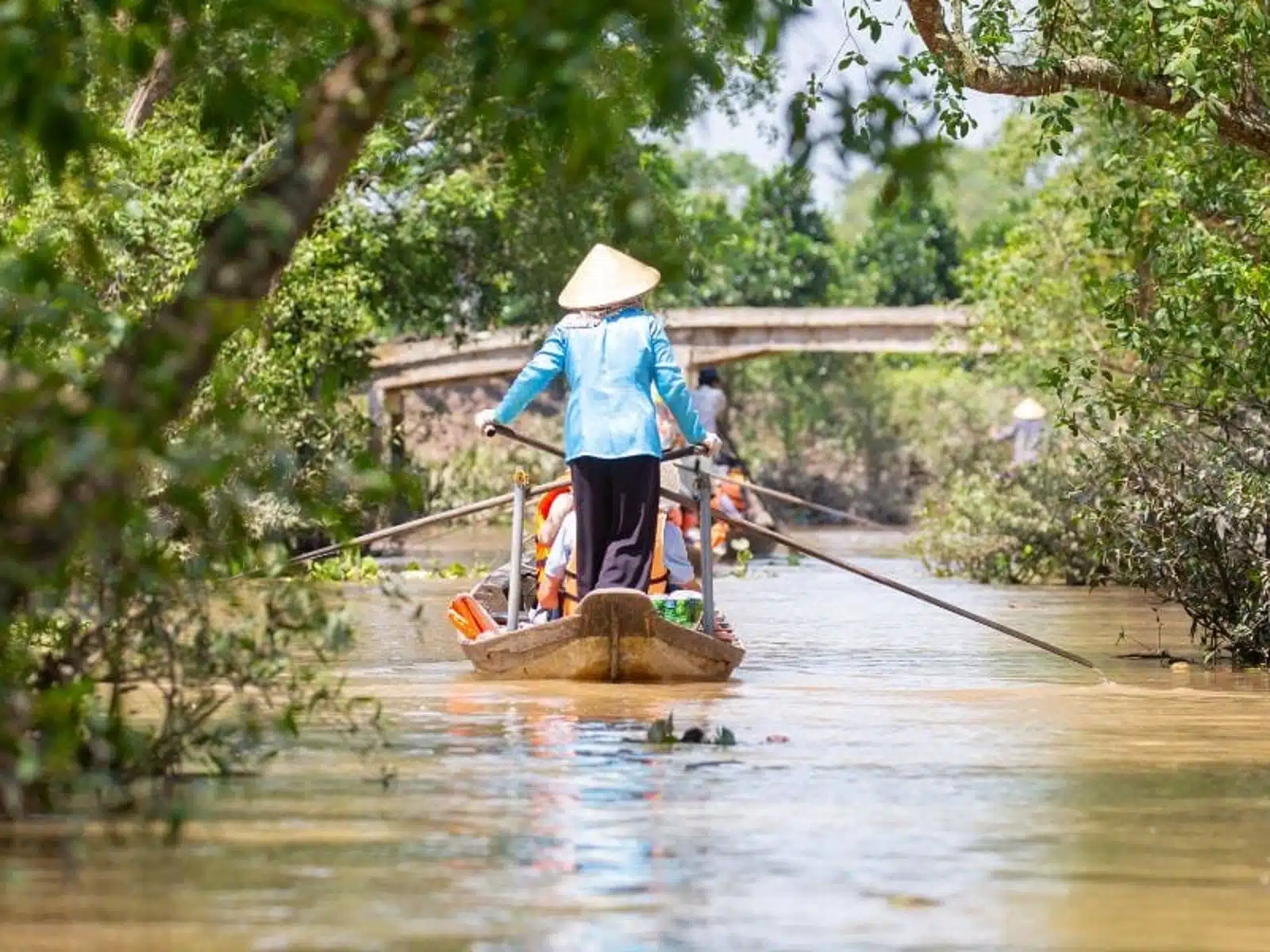
Image Credit: Shutterstock / Phuong D. Nguyen
A slow river cruise through Vietnam’s Mekong Delta offers an intimate glimpse into the lifeblood of the region, where the mighty Mekong River nourishes a landscape rich with rice paddies, fruit orchards, and bustling river markets. Traveling by boat allows for a unique perspective on the daily lives of the communities that depend on the river, promoting a deep connection with the local environment and culture. Eco-friendly cruises focus on sustainable practices and offer insights into the ecological importance of the delta.
Insider’s Tip
Choose a small, eco-conscious cruise operator to ensure a more personal and less intrusive experience, allowing for meaningful interactions with local communities.
When to Travel
The dry season from December to April is the best time for a Mekong Delta cruise, with lower rainfall and more comfortable temperatures.
How to Get There
The journey typically begins in Ho Chi Minh City (Saigon), accessible via Tan Son Nhat International Airport. From the city, travelers can connect with cruise operators for transfers to the delta.
The Bottom Line
Slow travel is a transformative approach that offers deeper, more meaningful experiences by connecting travelers with the essence of their destinations. Slow travel fosters a profound understanding and appreciation of diverse cultures, landscapes, and communities through activities like bicycle tours in Vietnam, island hopping in the Philippines, heritage trails in India, and conservation volunteering in Australia. It encourages a sustainable pace of exploration that benefits both the traveler and the planet. As you embark on your slow travel journey, remember that the richest experiences often come from the simplest moments—those that allow you to connect, reflect, and engage with the world thoughtfully and intentionally.
More From The Green Voyage
Top 10 Trending Travel Destinations 2024
6 Essential Banking Apps for International Travel – Managing Your Finances on the Go Traveling With Kids – 10
Tips to Create Memorable Family Holidays
The post The Beauty of Slow Travel 2024 – Embracing 12 Sustainable Destinations first appeared on The Green Voyage.
Featured Image Credit: Shutterstock / frantic00.
For transparency, this content was partly developed with AI assistance and carefully curated by an experienced editor to be informative and ensure accuracy.
